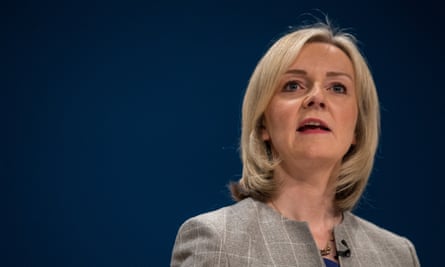The UK has one of the lowest proportions of female judges on its benches, according to a comparative study of judicial systems across Europe.
The report by the Council of Europe, published on Thursday, shows that the systems with the lowest percentage of women among professional judges were Azerbaijan (11%), Armenia (23%), Northern Ireland (23%), Scotland (23%), England & Wales (30%) and Ireland (33%). The Europe-wide average was 51%.
By comparison, the European court of human rights in Strasbourg – repeatedly criticised by Theresa May and Eurosceptics – has a relatively good record on gender diversity compared with most international courts. Currently 17 out of the 47 ECHR judges are women (36%).
The report is the latest in a series of regular reviews of the quality, cost and efficiency of justice across the 47 member nations of the organisation, which includes Russia and Turkey. Belarus is the only European state not to be a member.
The confirmation of the gender imbalance in British courts comes days after the justice secretary, Liz Truss, pledged at the Conservative party conference to improve diversity in the legal profession.
Britain’s common law procedures are significantly different from most of the continent, where judge-led inquisitorial systems are dominant. In most of Europe, lawyers choose to specialise as judges at the beginning of their careers rather than towards the end; women are more easily recruited straight out of law school before they face the possible career disruption of starting a family.
“In some states,” the report notes, “the difference is explained by the relatively recent feminisation of the judiciary, whose effects are currently more noticeable [in the lower courts] than at second instance and in the supreme court. In Montenegro, female judges are a majority at all levels, as they are in Bosnia-Herzegovina. In Romania [where 74% of the judiciary are female], the percentage of women increases with each instance.”
At the Conservative conference, Truss said: “Currently, only one in seven of QCs and one in three of partners in law firms are women. Fewer than one in 10 judges come from ethnic minorities. Only a quarter went to state school. This is modern Britain – we can do better than this.”

Only one out of the 12 justices on the supreme court, she pointed out, is a woman and none is from a minority ethnic background. “This would be difficult to justify in any boardroom or around the cabinet table.” The justice secretary did not, however, introduce any measures to rectify the problem.
Commenting on the shortage of female judges, Chantal-Aimée Doerries QC, chair of the Bar Council, said: “The lord chancellor’s decision to put diversity high on the agenda reflects [our] priorities. We all want to see greater career progression for women and BAME lawyers and judges. The bar and the judiciary need to reflect society at large.
“At the bar we have a number of initiatives already under way, including several mentoring schemes. One of these is aimed at supporting women and ethnic minority barristers seeking to become QCs and members of the judiciary. We also recently launched a maternity mentoring scheme, open to fathers and mothers with children to help balance parenting with a flourishing career at the bar.”
The Council of Europe report also showed that some of the highest-paid supreme court judges in Europe are in the UK when their salaries, £215,000 a year, are compared against national average gross incomes. For England and Wales, the ratio was 7.7 times the national gross salary. Only Ukraine, with a ratio of 8.5, was higher.
The lowest number of professional judges for every 100,000 inhabitants in 2014 were recorded in Ireland (three), England & Wales (three), Scotland (three) and Northern Ireland (four); the Europe-wide average is 21. That disparity is due to the fact that the continent’s inquisitorial system employs far more judges per head of population and consequently spends far less on legal aid for defendants and claimants than the UK adversarial system.
The relatively high spend of legal aid in the UK is regularly seized on by ministers as proof that legal aid is excessively generous and should be cut further. According to the report, legal aid per capita spent in Northern Ireland in 2014 was €73.53 (£64.67) – by far the highest recorded. It was €38.14 in England & Wales, €33.28 in Scotland, €18.45 in the Republic of Ireland; the Europe-wide average was €8.64.










